Services

ScitonErbuimn Yag Laser Dermabrasion
ScitonErbuimn Yag Laser Dermabrasion
.jpg)
Application Features
It is natural to pursue beauty, and it is everyone’s dream to have youthful and smooth skin. Laser resurfacing skin renewal has therefore become a highly sought-after cosmetic procedure. If you are deeply troubled by scars and crow’s feet around your lips or eyes, laser resurfacing just might be the solution for you.
Laser involves the use of an Er-Yag laser beam. Through the skin’s high water absorbency property, the skins’ outer most layer is gasified to promote skin renewal, stimulate collagen regeneration, and make the skin in its healthy and bright state. Traditional resurfacing is unable to control the depth of skin resurfacing and easily causes injury on the dermal tissue, resulting in wounds and scars, postoperative pigmentation, and other side effects. In addition, due to the long treatment time needed, wound bleeding may result, and recovery is slower. The laser displays the characteristics of an Er-Yag laser beam. A flattop laser beam is set at a required depthand gasification and bleeding cessation are conjunctively performed to promote significant skin improvement results, quick recovery, greater safety, and fewer side effects.
♦Efficacy.jpg)
Depending on the skin type and the severity of skin problems that vary from individual to individual, the most appropriate energy and in-depth treatment are administered in about 15-20 minutes. The skin’s epidermal dullness, roughness, sallowness, fine lines, spots, large pores, and scar problems (concavities and convexities) can be repaired after about seven days since there is barely any bleeding. You may return to work with makeup on. Your daily routine will not be affected, and you will have smooth, bright, and delicate skin in no time.
Treatment Process
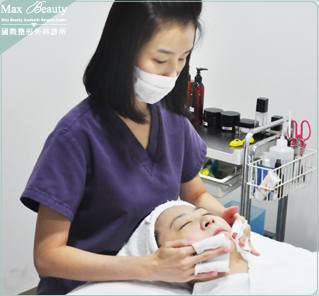 |
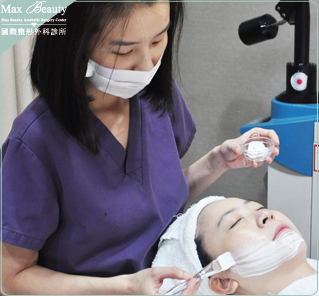 |
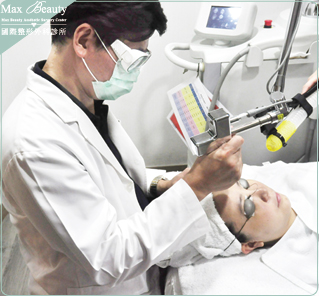 |
|---|---|---|
| Perform cleansing | Apply anesthetic ointment | The surgeon operates laser |
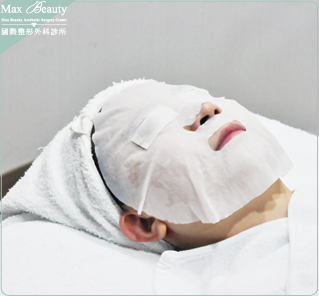 |
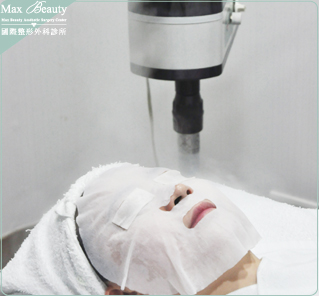 |
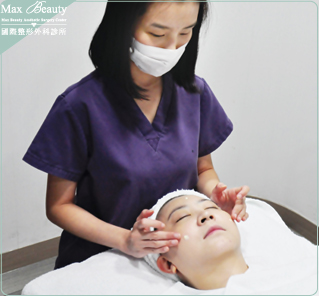 |
|---|---|---|
| Apply moisturizing | Apply cold spray | Apply eye ointment over the entire face |
♦Treatment Time and Interval.jpg)
The time varies according to scope of treatment. Each session (preoperative and postoperative) is about 40-60 minutes. Therapy sessions are usually conducted once every 4-6 weeks, 3-4 sessions in total. The doctor will provide recommendations according to the skin condition of individuals after an assessment.
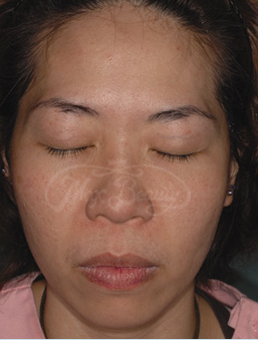 |
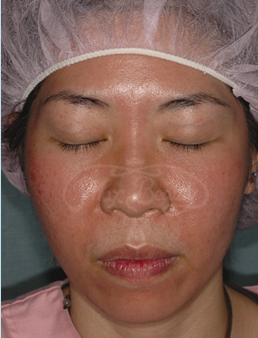 |
| Before surgery | About 30 minutes after surgery |
♦Suitable Targets.jpg)
1.Those with skin dullness, roughness, sallowness, and cuticle thickening.
2.Those with fine lines and small spots.
3.Those with large pores and acne pits.
4.Those with other external scars.
5.Those with protruding spots, skin moles, warts, military swelling, swollen sweat duct, amyloid deposits, and other skin lesions.
6.It can stimulate collagen regeneration and tighten and enhance facial skin tissue.
Precautions
| 1.Avoid putting on heavy makeup on the day of treatment. |
| 2.Strengthen moisturizing and repair and sunscreen. Avoid direct sun exposure and reduce outdoor activity. |
| 3.Do not perform exfoliation before surgery and two weeks after surgery. Do not apply whitening products (LC. Arbutin, etc.), acid products (A acid, AHA, salicylic acid, etc.), and skincare products containing irritating ingredients (alcoholic ingredients). |
| 4.Avoid heat stimulus two weeks after surgery, such as sauna, oven, stem room, hot spring, face washing using hot water, etc. |
|
5.In case there is scaring, there will be slight itchiness, which is a normal phenomenon of epidermal regeneration. Do not scratch it and avoid forcefully peeling it. Wait for the skin to heal it self, and the skin will peel off naturally. If the skin becomes slightly rosy, strengthen moisturizing and sunscreen to avoid pigmentation and darkening. |
| 6.Do nose use skincare products or drugs not prescribed by the doctor during treatment period. |
|
7.Within 12 hours after treatment, reddening and a burning sensation similar to sunburn is seen at the surgical site. For those whose treatment site is deeper, edema may appear. Apply an ice pack wrapped in clean gauze on the surgical site to alleviate discomfort. This is a normal reaction after resurfacing, which will subside after 2-3 days. There is no need for concern, but you may make a re-visit for examination by the surgeon. |
|
8.Postoperative home wound care method: The surgical site should be moisturized and away from suns exposure. Use a cotton swab or clean gauze dipped in saline solution for localized cleaning. After wiping it dry, apply ointment until scar formation start using postoperative skincare products. Strengthen moisturizing and sunscreen. |
| ◆Contraindication◆Please consult the surgeon before undergoing treatment. |
| 1.Women that are pregnant or are planning pregnancy. |
| 2.Those who apply acids two weeks before surgery. |
| 3.Those with a viral infection, allergic skin, light-sensitive skin, taking light-sensitive drugs (such as A acid), skin lesions or immune system anomaly should consult the surgeon before undergoing treatment. |
| 4.Please inform the surgeon if you have had Herpes labialis to prevent postoperative recurrences. |
Q&A
Q:How long does it take for results to show after laser resurfacing?
A:Laser resurfacing takes about three to six months to heal, the skin’s regeneration of new collagen tissue, restoration of elasticity, and regrowth after laser resurfacing treatment on the the damaged tissue are time-consuming. Therefore, results are not immediate and patient and continuous postoperative care are necessary.
Q:What special precautions should be noted when darkening after resurfacing occurs in order to avoid recurrences of darkening after laser?
A:Darkening after laser is an inevitable reaction, as darkening is the result of the vascular proliferation phase of wound healing (reddening) and excessive pigmentation (darkening). This occurrence is temporary, but since prolonged exposure to ultraviolet light under the sun will stimulate melanin deposition, postoperative sunscreen is very important.
Case
♦Case
